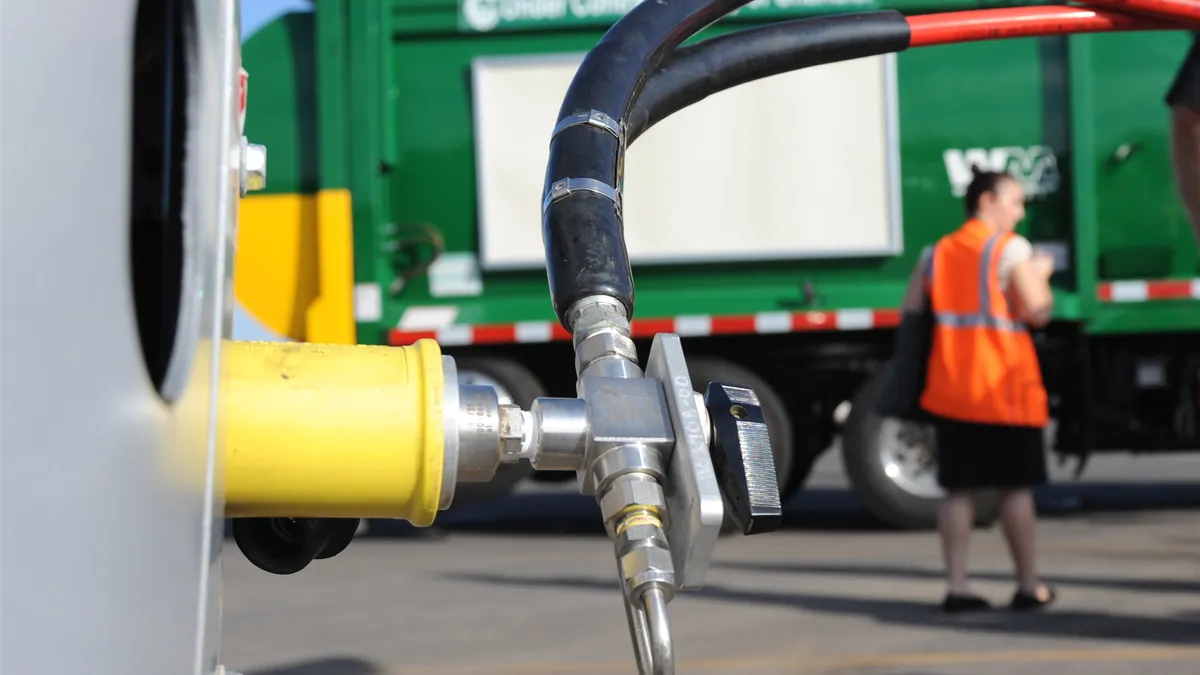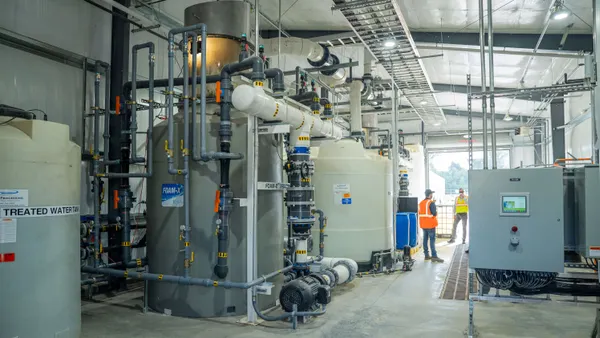Dive Brief:
- The U.S. EPA released its draft update to the Renewable Fuel Standard on Friday. The update would lower ambitions for cellulosic biofuels like those created from decomposing organic waste in landfills or anaerobic digesters.
- Industry groups expressed disappointment with the update, called Set 2, saying the EPA is underrating biogas producers' ability to increase production over the next three years. The RFS is the most far-reaching incentive program for biofuels in the country, and its production targets strongly influence the price for credits sold by such producers.
- The proposal would also remove language outlining eRINs, a provision that would allow for electricity generated from biogas to earn credits through the program. EPA first drafted the language creating eRINs in 2022, but it has never set volumes for the category, leaving it essentially theoretical.
Dive Insight:
Under the Renewable Fuel Standard, created by an amendment to the Clean Air Act two decades ago, the EPA creates renewable volume obligations every year. The RVOs set the amount of alternative fuel credits that refiners and importers of non-petroleum fuel must purchase in a given year. Producers of such fuels, like renewable natural gas, generate Renewable Identification Number (RIN) credits for every gallon of alternative fuel they produce, which obligated parties can purchase to meet their quota.
The Set 2 Rule proposed by the EPA on Friday is the second time the agency has set RVO targets for multiple years, after the first Set Rule was finalized in 2023. That earlier rule set renewable volume obligations for 2023, 2024 and 2025.
This year’s proposal would lower the 2025 renewable volume obligation for cellulosic biofuels due to an anticipated production shortfall. Since the first Set Rule was finalized, biofuel producers have yet to hit production targets for the category. That’s forced the EPA to propose waivers for refiners and importers required to purchase the alternative fuel credits for multiple years.
While the total amount of cellulosic biofuels set under the RVOs will rise in 2026 and 2027, the growth rate EPA projects will shrink, contrary to the wishes of the biogas industry. The agency said this is due to the limited demand it expects for compressed and liquefied natural gas as a transportation fuel in the coming years.
The proposal projects bold increases in biofuels produced from crops like corn and soybeans. It also cuts in half the credits that can be generated by fuels created in other countries or that use foreign feedstocks, further boosting the domestic alternative fuels market.
But its more limited outlook for fuels like RNG creates an uneven outcome for producers, American Biogas Council Executive Director Patrick Serfass said in a statement.
“This proposal is not a win for all farmers. In particular, dairy and other livestock farmers are the most harmed. The RFS supports these communities through steady income generated from converting their waste to renewable fuel. This misalignment is particularly surprising given the Administration’s welcome, outspoken support for American farmers and the natural gas industry," he said.
Advisory firm William Blair called the update a "net positive for RNG" in a research note Friday. Analysts said the multiyear visibility provided certainty for the market, and the implied increase in expected biofuel production over the years covered by Set 2 can provide growth for the RNG industry, albeit at a more limited pace than what industry groups had hoped to see.
This isn't the first time EPA officials have acknowledged the limited end market for RNG. In the final version of the first Set Rule, the agency allowed biogas to be used as an intermediate for advanced transportation fuels for aviation and other applications for the first time, citing limited markets for RNG. The EPA is proposing to expand this bridge use to certain kinds of wastewater sludges in the Set 2 rule.
Adam Schubert, a senior associate with Stillwater Associates, noted that the market for RNG as a transportation fuel is near its saturation point. Many of the fleets that could transition to vehicles fueled by compressed natural gas have done so already, especially in states with strong incentives like California. In order for demand to grow significantly, other states or the federal government would likely need to require fleets to shift from diesel to CNG-powered trucks.
The EPA finalized a partial waiver for 2024 cellulosic biofuel obligations as part of its update, as production of RNG lagged behind the ambitious production target previously set by the EPA. Schubert said the shortfall in fuel which necessitated the waiver “hit [the EPA] in the face” with the realities of demand for RNG.
“That’s not great news for renewable natural gas producers, but it’s realistic. If there’s no vehicles, then there’s no way for them to get RINs,” Schubert said.
The Set 2 proposal would also shift the way that EPA calculates projected cellulosic biofuel volumes in future rulemakings to limit the potential for future shortfalls and waiver credits.
The update is now subject to public comments, which could prompt changes to the program.














